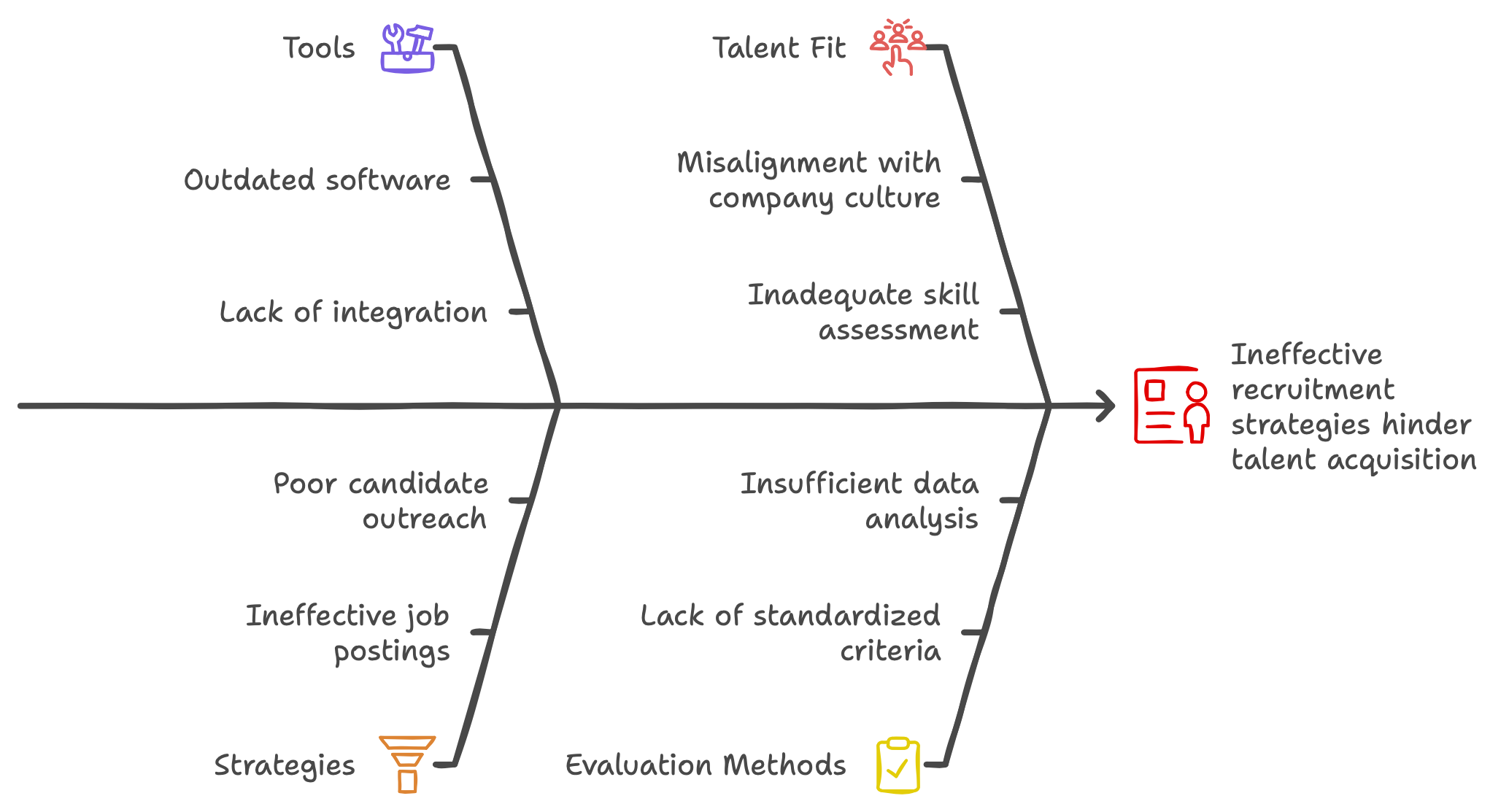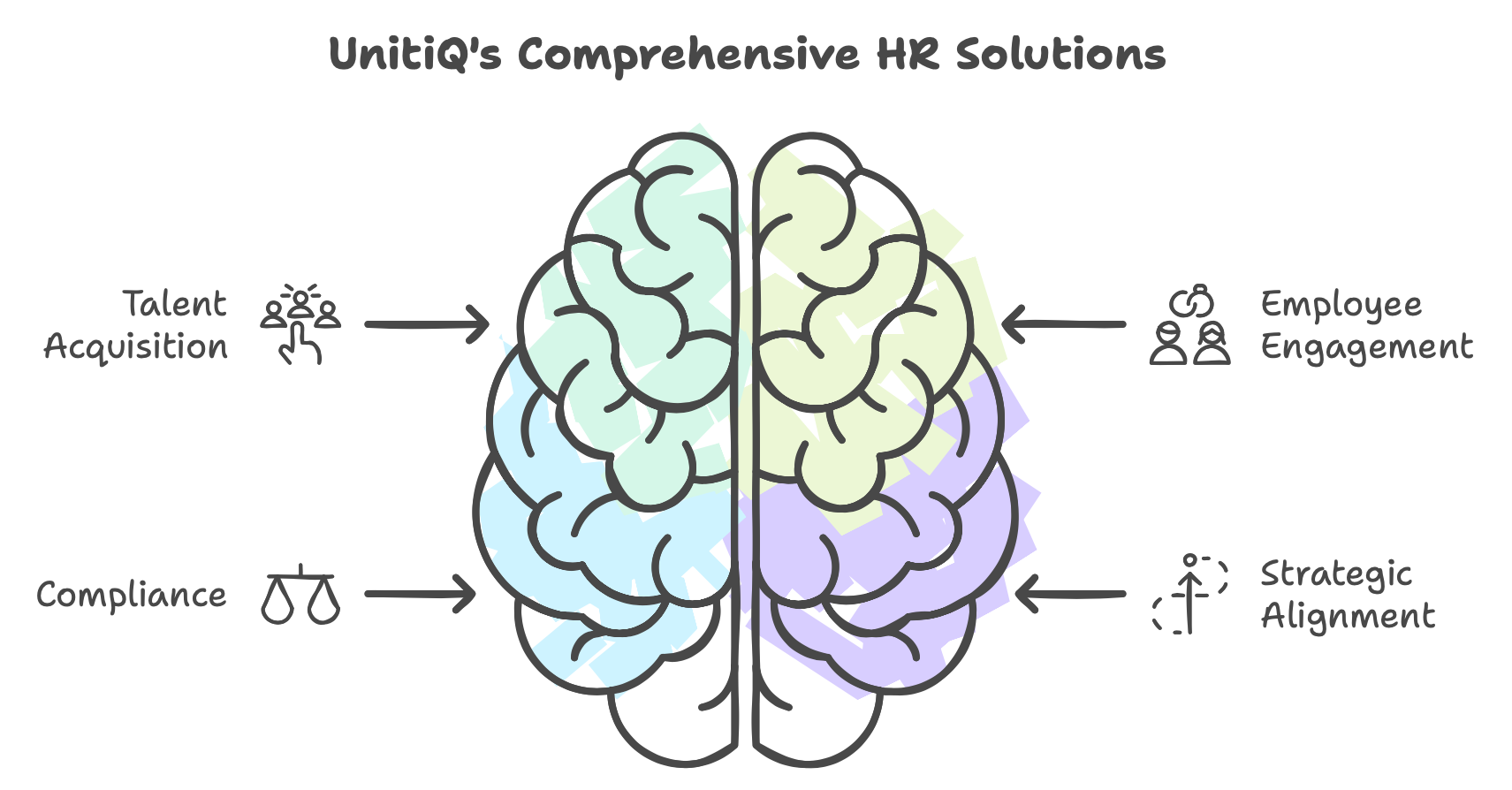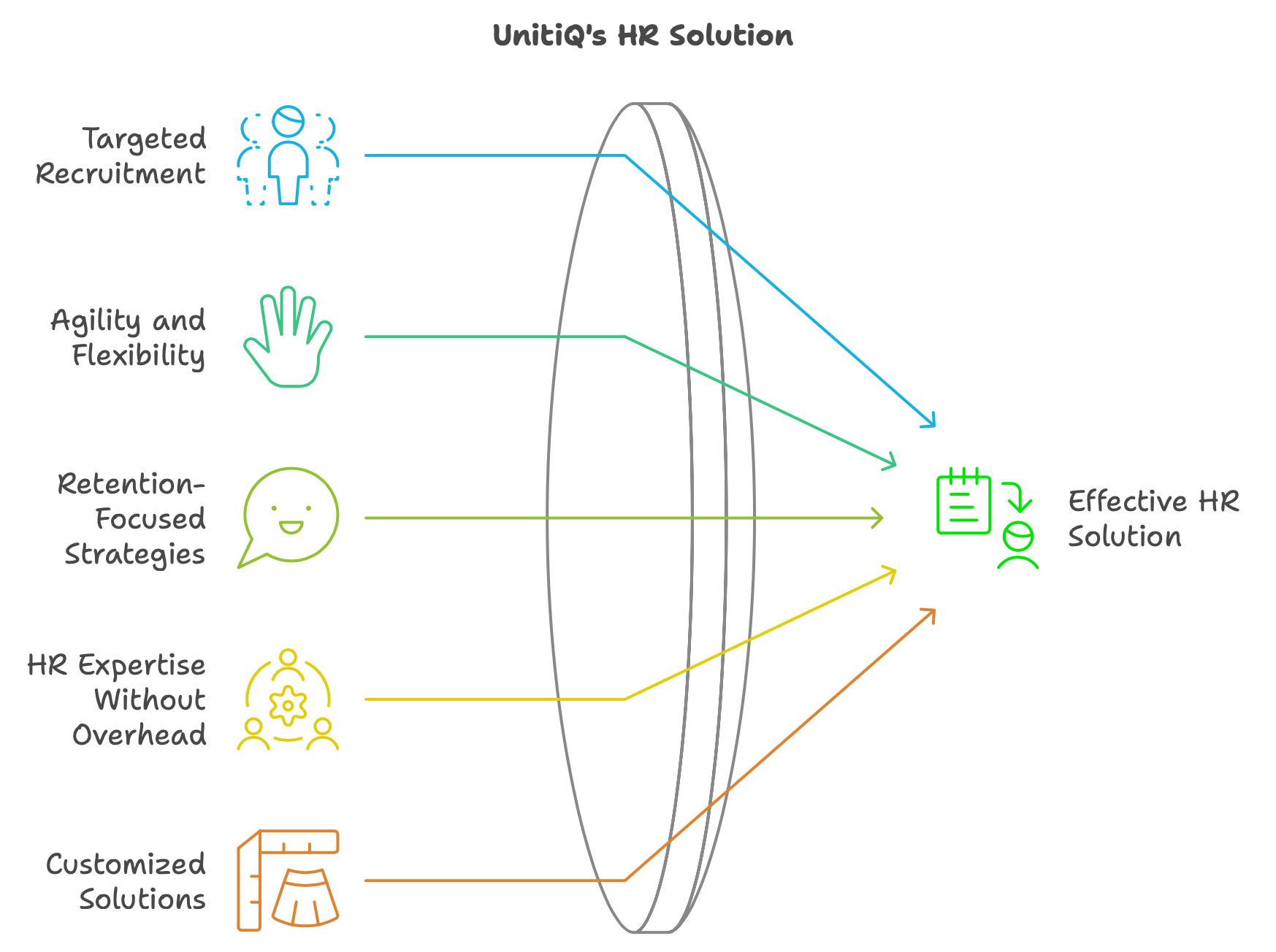Are You Making Informed Hiring Decisions with Evidence-Based Assessments?
Recruiting the right talent can be the key to unlocking your company’s true potential. But the question remains—are you using the best tools and strategies to bring in people who will genuinely move the needle?
Many recruitment strategies fail due to common issues like outdated tools, misalignment with company culture, or poor evaluation methods.

Addressing these gaps - whether through better candidate outreach or more accurate skill assessments—can significantly enhance your ability to attract top talent and ensure a stronger, more aligned workforce.
UnitiQ: Tailored HR Solutions for a Changing Business Landscape
At UnitiQ, we believe in more than just filling positions. We focus on building teams that help businesses thrive, offering on-demand and fractional HR solutions that deliver top-tier expertise without the commitment of full-time staff. For small and medium-sized businesses navigating growth, these flexible HR services can be a game changer. Our mission is simple: to help you get the most from your talent management and recruitment processes.

Whether it’s talent acquisition, employee engagement, or ensuring compliance, UnitiQ’s experienced HR professionals work hand-in-hand with your team to create a strategy that’s truly aligned with your business goals.
Why UnitiQ Stands Out
One of the biggest challenges for SMEs is accessing high-quality HR expertise while keeping costs in check. UnitiQ solves this problem by providing exactly what you need, when you need it. No excess overhead, no long-term contracts—just straightforward, effective solutions.

Here’s how UnitiQ helps companies like yours:
- Targeted Recruitment: We employ evidence-based assessments to ensure that you’re not only hiring qualified candidates but bringing in people who are the right cultural fit and have long-term potential. We tailor recruitment strategies to minimize costly missteps.
- Agility and Flexibility: Our services are designed to flex with your needs. Whether you’re scaling up quickly or managing a restructuring, we’re there to provide the support you need, exactly when you need it.
- Retention-Focused Strategies: High turnover is costly. We work with you to improve retention, identifying underlying issues that may be driving employees away and implementing solutions to keep your workforce engaged and satisfied.
- HR Expertise Without the Overhead: You gain access to experienced HR professionals who are there to support your goals—without the added cost of a full-time hire. We integrate seamlessly with your team to provide guidance and support on your terms.
- Customized for Your Business: No cookie-cutter solutions here. Every strategy we design is tailored to your specific challenges and growth objectives.
Ready to Transform Your HR Approach?
Let’s have a conversation about how UnitiQ's fractional HR solutions can help you build a stronger, more resilient workforce without the burden of full-time hires. Whether you're looking to streamline recruitment, improve retention, or navigate complex compliance issues, our flexible, on-demand HR support gives you the expertise you need—exactly when you need it.
By leveraging fractional HR services, you get access to top-tier professionals who seamlessly integrate with your team, providing strategic guidance tailored to your business goals, all while controlling costs.
Contact me directly, and I’ll offer a special consultation based on your unique needs.
Olga Fedoseeva
Founder, UnitiQ
My LinkedIn
By leveraging fractional HR services, you get access to top-tier professionals who seamlessly integrate with your team, providing strategic guidance tailored to your business goals, all while controlling costs.
Contact me directly, and I’ll offer a special consultation based on your unique needs.
Olga Fedoseeva
Founder, UnitiQ
- Connect with me:
My LinkedIn
